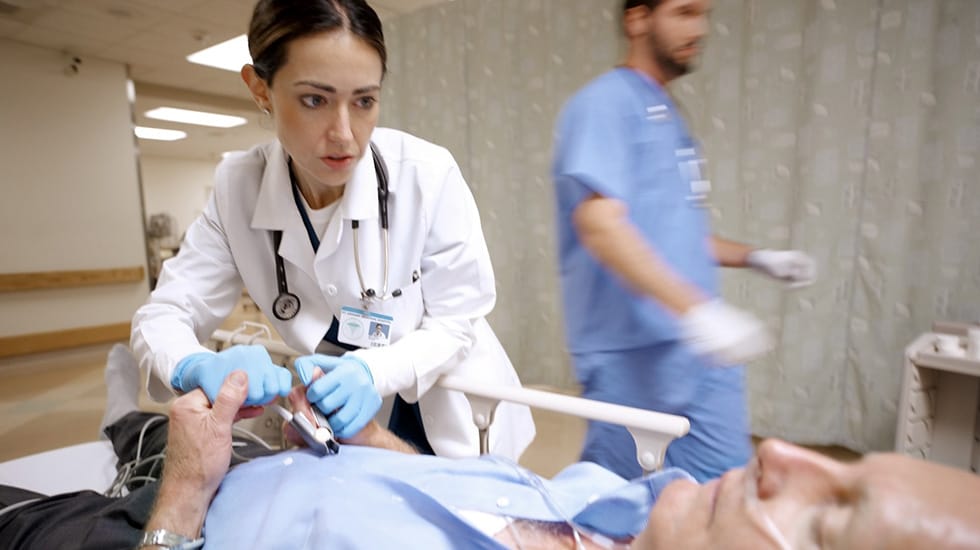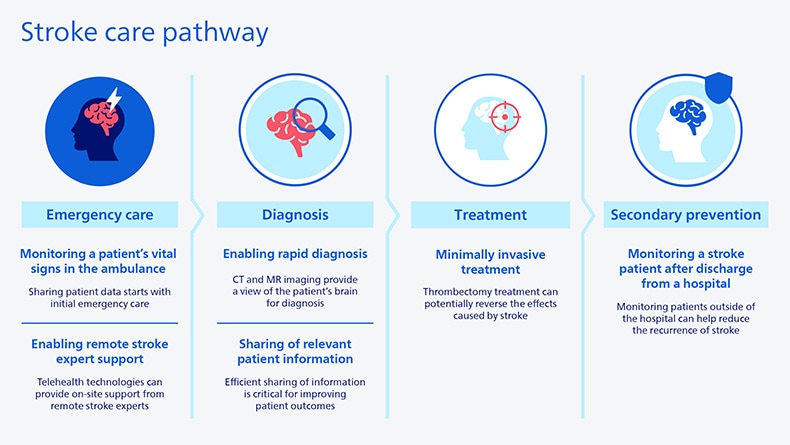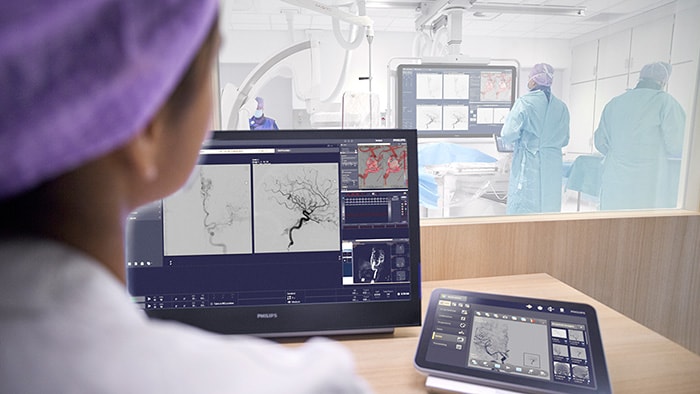Every minute matters: transforming stroke care through innovation and collaboration
Oct 29, 2025 | 4 minute read
Every two seconds, someone in the world experiences a stroke. For millions of people and families each year, this single event can change everything – often leaving behind a lifelong impact of disability or loss. As a clinician and now Chief Medical Officer at Philips, I have seen both the devastation stroke can bring and the incredible hope that comes when care is timely, coordinated and effective.
That’s why, on World Stroke Day – and every day – it’s essential to raise awareness about this devastating condition, and the fact that most strokes are preventable, treatable and recoverable.

A global challenge with a proven solution
Stroke is a leading cause of disability and death worldwide. Around 12 million people – including an increasing number of young people – experience a stroke every year, with half not surviving and many of the rest living with lasting impairment. The human and economic toll is immense, estimated at more than USD 900 billion annually – a figure expected to almost double within 25 years.
Thanks to advances in clinical research and technology, stroke is no longer the untreatable emergency it once was. Proven treatments such as intravenous thrombolysis (to dissolve the blood clot via intravenous injection of clot-busting drugs) and mechanical thrombectomy (a minimally invasive procedure that removes the clot blocking blood flow to the brain) can prevent death and disability when delivered quickly. The phrase ‘time is brain’ captures it perfectly: every minute saved can mean millions of brain cells preserved and a life regained.
Clinical trials have shown that mechanical thrombectomy can reverse the effects of major strokes when performed in time. Yet today, access remains the exception rather than the norm. In the Europe region, fewer than 7% of eligible patients receive it. Across low- and middle-income regions, the gap is even wider. Where someone lives often still determines whether they have a fair chance at recovery.
Why investment matters
Expanding access to stroke treatment is not only a moral imperative – it also makes strong economic sense. Improving acute stroke care can yield significant savings downstream by reducing the need for long-term rehabilitation, nursing care and social support. Every country can benefit from this approach. By investing in comprehensive and primary stroke centers, training the health workforce, and aligning reimbursement policies with effective care pathways, governments can strengthen health system resilience while delivering better outcomes for their citizens. This is how we move from treating disease to restoring lives.

Research and innovation
As a health technology company, we continue to drive innovation in stroke care across diagnostic imaging, image-guided therapy and ambulatory care. Together with our partners, we help build systems that enable care teams to make the right decisions faster, treat more patients efficiently and improve outcomes – delivering better care for more people.
For example, Philips sponsors and facilitates the WE-TRUST (Workflow Optimization to Reduce Time to Endovascular Reperfusion for Ultra-fast Stroke Treatment) study. This clinical trial is evaluating the clinical impact of the Direct to Angio Suite workflow for mechanical thrombectomy treatments, enabled by a dedicated Philips technology. The workflow combines stroke diagnosis and treatment in the same interventional suite, compared to the conventional approach of diagnosing patients in a CT or MRI suite before transferring them for treatment. The Direct to Angio Suite approach has the potential to reduce time to treatment and improve outcomes.
As a further example, Philips is an industry partner in the UMBRELLA project, a five-year, EU-funded initiative under the Innovative Health Initiative (IHI). UMBRELLA aims to transform stroke care across the full pathway – from diagnosis and emergency treatment through rehabilitation and secondary prevention – by harmonizing clinical data from multiple European hospitals, building a federated data platform and validating AI-based algorithms for stroke diagnosis, risk prediction and decision-making.
A call for collective responsibility
Transforming stroke care requires more than technology. It demands collaboration – across policymakers, clinicians, payers, patients and communities. It calls for investment – in people, infrastructure and awareness. And above all, it requires commitment – to ensure that every person, no matter where they live, can access life-saving treatment when it matters most.
That’s why we partner with others to expand access to timely, high-quality stroke care. This includes our advocacy partnership with Medtronic Neurovascular, our collaboration with the World Stroke Organization, and our role as a founding member of the Global Stroke Action Coalition – all supporting our shared mission to transform stroke care on a global scale.
This World Stroke Day, let’s tell the world of our shared goal to turn possibility into practice – now is the time to act together.
Additional reading materials:
The opinions and clinical experiences presented herein are specific to the featured topic(s), are not linked to any specific patient and are for information purposes only. The medical experience(s) derived from these topics may not be predictive of all patients. Individual results may vary depending on a variety of patient-specific attributes and related factors. Nothing in this blog is intended to provide specific medical advice or to take the place of written law or regulations.








